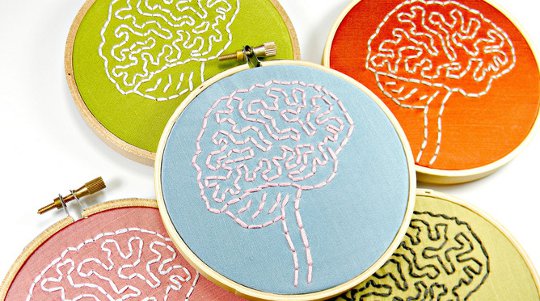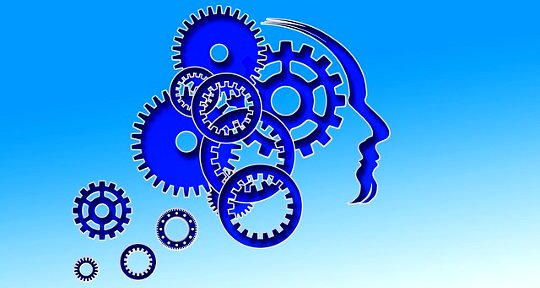 Whether man-made sources of mercury are contributing to the mercury levels in open-ocean fish has been the subject of hot debate for many years. My colleagues Carl Lamborg, Marty Horgan and I analyzed data from over the past 50 years and found that mercury levels in Pacific yellowfin tuna, often marketed as ahi tuna, is increasing at 3.8% per year. The results were reported earlier this month in the journal Environmental Toxicology and Chemistry.
Whether man-made sources of mercury are contributing to the mercury levels in open-ocean fish has been the subject of hot debate for many years. My colleagues Carl Lamborg, Marty Horgan and I analyzed data from over the past 50 years and found that mercury levels in Pacific yellowfin tuna, often marketed as ahi tuna, is increasing at 3.8% per year. The results were reported earlier this month in the journal Environmental Toxicology and Chemistry.
 The prevailing notion about obesity is that if we just work out harder and eat a little bit better, then perhaps the obesity trend will subside in a few years. However, the key to really making a difference is food – the number of calories we eat is the most important factor in obesity.
The prevailing notion about obesity is that if we just work out harder and eat a little bit better, then perhaps the obesity trend will subside in a few years. However, the key to really making a difference is food – the number of calories we eat is the most important factor in obesity.
 Government nutrition guidelines recommend a high carbohydrate diet regardless of the ample evidence of the health risks it promotes. Yet, chronic diseases and obesity rates have risen in correlation with a reduced intake of dietary fat. While science has moved on, nutritional advice lags behind.
Government nutrition guidelines recommend a high carbohydrate diet regardless of the ample evidence of the health risks it promotes. Yet, chronic diseases and obesity rates have risen in correlation with a reduced intake of dietary fat. While science has moved on, nutritional advice lags behind.
 Might the economic burden and individual suffering associated with Alzheimer’s disease be reduced by the simple and inexpensive expedient of prescribing B-vitamins to those with high levels of homocysteine?
Might the economic burden and individual suffering associated with Alzheimer’s disease be reduced by the simple and inexpensive expedient of prescribing B-vitamins to those with high levels of homocysteine?
 You can trade massages with a friendly co-worker! Massage in the workplace is no longer reserved for just the wealthy, the weird, or the weary. In fact, individuals and corporations alike are finding it to be a practical and joyful way of increasing employee satisfaction and productivity.
You can trade massages with a friendly co-worker! Massage in the workplace is no longer reserved for just the wealthy, the weird, or the weary. In fact, individuals and corporations alike are finding it to be a practical and joyful way of increasing employee satisfaction and productivity.
 Environmental chemicals are wreaking havoc to last a lifetime. 10 to 15 percent of all babies born in the U.S. have some type of neurobehavorial development disorder. Still more are affected by neurological disorders that don’t rise to the level of clinical diagnosis.
Environmental chemicals are wreaking havoc to last a lifetime. 10 to 15 percent of all babies born in the U.S. have some type of neurobehavorial development disorder. Still more are affected by neurological disorders that don’t rise to the level of clinical diagnosis.
 Is walking the next big thing? It's been called "America's untrendiest trend." The evidence that millions of people are finally walking again is as solid as the ground beneath our feet.
Is walking the next big thing? It's been called "America's untrendiest trend." The evidence that millions of people are finally walking again is as solid as the ground beneath our feet.
Scientists say a new biomarker that predicts the risk of developing dementia can be detected with a simple blood test—a test they hope will be applicable in clinical practice.
 Women whose mothers smoked while pregnant are two to three times as likely to be diabetic as adults. Fathers who smoked while their daughter was in utero also contribute to an increased diabetes risk, but more research is needed to establish the true effect.
Women whose mothers smoked while pregnant are two to three times as likely to be diabetic as adults. Fathers who smoked while their daughter was in utero also contribute to an increased diabetes risk, but more research is needed to establish the true effect.
 What causes cancer? This deceptively simple question has a devilishly complex answer. So when US researchers proposed a relatively simple mathematical formula to explain a long-standing conundrum in cancer earlier this year, it was bound to get a lot of attention.
What causes cancer? This deceptively simple question has a devilishly complex answer. So when US researchers proposed a relatively simple mathematical formula to explain a long-standing conundrum in cancer earlier this year, it was bound to get a lot of attention.
 Marijuana appears to ease symptoms of depression caused by chronic stress, new research with animals suggests. The study focused on endocannabinoids, which are brain chemicals similar to substances found in marijuana.
Marijuana appears to ease symptoms of depression caused by chronic stress, new research with animals suggests. The study focused on endocannabinoids, which are brain chemicals similar to substances found in marijuana.
 We all have a poor night’s sleep from time to time: those nights when you lie awake for hours trying desperately to go to sleep but can’t stop worrying about tomorrow. Or when you repeatedly wake up throughout the night, or can’t get back to sleep in the early hours of the morning.
We all have a poor night’s sleep from time to time: those nights when you lie awake for hours trying desperately to go to sleep but can’t stop worrying about tomorrow. Or when you repeatedly wake up throughout the night, or can’t get back to sleep in the early hours of the morning.
 The human brain is the most extraordinary and complex object in the known universe. So it’s a little surprising that only recently has the concept of brain health begun to emerge. After all, if the body is a “temple”, then surely the brain must be the “high altar” as it generates all our thoughts, feelings and movements.
The human brain is the most extraordinary and complex object in the known universe. So it’s a little surprising that only recently has the concept of brain health begun to emerge. After all, if the body is a “temple”, then surely the brain must be the “high altar” as it generates all our thoughts, feelings and movements.
 The awe people feel when they connect with nature, art, and spirituality is linked to lower levels of pro-inflammatory cytokines—proteins that tell the immune system to work harder.
The awe people feel when they connect with nature, art, and spirituality is linked to lower levels of pro-inflammatory cytokines—proteins that tell the immune system to work harder.
 Getting the recommended 150 minutes of moderate exercise each week may be challenging for some older adults, but researchers say that doesn’t mean they shouldn’t work at it.
Getting the recommended 150 minutes of moderate exercise each week may be challenging for some older adults, but researchers say that doesn’t mean they shouldn’t work at it.
 WBV (whole body vibration) is famous for promoting bone growth. Extensive research over the last forty years has shown that WBV safely promotes and increases bone density, more so than conventional exercise, which has long been understood to be important for healthy bone development.
WBV (whole body vibration) is famous for promoting bone growth. Extensive research over the last forty years has shown that WBV safely promotes and increases bone density, more so than conventional exercise, which has long been understood to be important for healthy bone development.
 The extent to which our personalities determine aspects of our lives and health has increasingly been the subject of research over the last few years. There was the suggestion, for example, that being a morning person or a night owl might reveal a lot about our personality...
The extent to which our personalities determine aspects of our lives and health has increasingly been the subject of research over the last few years. There was the suggestion, for example, that being a morning person or a night owl might reveal a lot about our personality...
 Think about the last time you left the house. Did strangers on the street acknowledge your presence with a smile or avert their glance? Chances are that the answer depended on your age, gender and, of course, your race.
Think about the last time you left the house. Did strangers on the street acknowledge your presence with a smile or avert their glance? Chances are that the answer depended on your age, gender and, of course, your race.
 A new study shows that your personality in your 20s can predict your lifespan. In addition, your close friends can probably recognize the relevant personality traits better than you can.
A new study shows that your personality in your 20s can predict your lifespan. In addition, your close friends can probably recognize the relevant personality traits better than you can.
- By Penn State
Giving employees more control over their work schedules may help curb sleep deficiency, according to health researchers.
 There’s always one in a crowd, a sort of harbinger of the oncoming mosquito onslaught: a person mosquitoes seem to target more than others. What is it about these unlucky chosen few that makes them mosquito magnets?
There’s always one in a crowd, a sort of harbinger of the oncoming mosquito onslaught: a person mosquitoes seem to target more than others. What is it about these unlucky chosen few that makes them mosquito magnets?

In an effort to understand autism spectrum disorder (ASD), researchers have zeroed in on synchronization between different parts of the brain. Some of the findings have suggested a lack of synchronization (connectivity), while other studies have found the exact opposite: over synchronization.
 Income, race, and ethnic origin have far more impact on a child’s risk for asthma than whether or not they live in an urban neighborhood, research shows.
Income, race, and ethnic origin have far more impact on a child’s risk for asthma than whether or not they live in an urban neighborhood, research shows.














